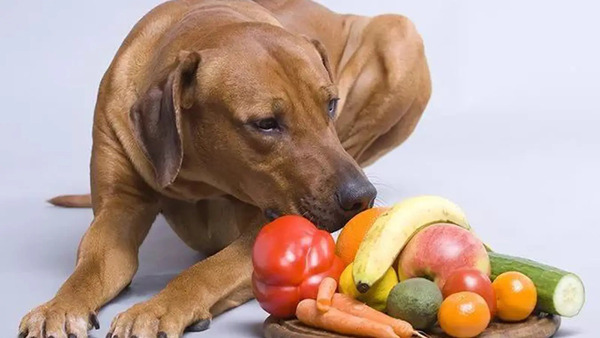As pet owners and animal lovers, it’s crucial to be aware of the plants that can be harmful to our furry friends. Many common plants contain toxic compounds that can lead to serious health issues if ingested by animals. In this article, we will explore some of the most common toxic plants, their effects on animals, and what you can do to keep your pets safe.

Before diving into specific plants, it’s important to understand what makes a plant toxic. Many plants contain:
Alkaloids: These compounds can affect the nervous system and lead to symptoms such as vomiting, diarrhea, or even seizures.
Glycosides: These can be harmful to the heart and may cause arrhythmias or cardiac arrest.
Oxalates: Found in some plants, these can irritate the mouth and digestive tract.
Here are some common plants that are toxic to animals:
Description: Oleander is a popular ornamental plant with beautiful flowers.
Toxic Effects: All parts of the plant are toxic. Ingestion can lead to severe gastrointestinal upset, heart problems, and even death.
Description: Sago palms are commonly found in gardens and landscapes.
Toxic Effects: The seeds (or “nuts”) are extremely toxic. Symptoms include vomiting, diarrhea, seizures, and liver failure.
Description: Many types of lilies are popular in bouquets and gardens.
Toxic Effects: Particularly harmful to cats, ingestion can cause kidney failure. Symptoms include vomiting, lethargy, and loss of appetite.
Description: Azaleas are beautiful flowering shrubs found in many gardens.
Toxic Effects: Ingesting even small amounts can lead to vomiting, diarrhea, and severe heart issues.
Description: Foxglove is a stunning plant with tall spikes of tubular flowers.
Toxic Effects: Contains compounds that can cause serious heart problems, including arrhythmias and potentially fatal consequences.
Description: While ripe tomatoes are safe, the green parts of the plant are toxic.
Toxic Effects: Ingestion of the leaves or unripe fruit can lead to gastrointestinal upset and lethargy.

If you suspect your pet has ingested a toxic plant, look for these common signs:
Vomiting or Diarrhea: These are often the first indicators of poisoning.
Lethargy: A sudden lack of energy or interest in activities can be a red flag.
Difficulty Breathing: Trouble breathing or excessive panting can indicate a serious reaction.
Seizures or Tremors: These symptoms require immediate veterinary attention.
If you think your pet has consumed a toxic plant, follow these steps:
Identify the Plant: Try to identify the plant your pet ingested. Take a photo or bring a sample to the vet if possible.
Contact Your Veterinarian: Call your vet immediately for advice. They may recommend bringing your pet in for treatment.
Provide Information: Be ready to provide details about the plant, how much was consumed, and when it happened.
To prevent accidental poisoning, consider these tips:
Research Before Planting: Always research plants before adding them to your garden or home. Check for toxicity to pets.
Create a Pet-Friendly Garden: Focus on non-toxic plants that are safe for your animals.
Monitor Your Pets: Keep an eye on your pets when they are outside, especially in areas with new or unfamiliar plants.
Being aware of the plants that are toxic to animals is essential for keeping your pets safe and healthy. By knowing which plants to avoid and what signs of poisoning to look for, you can help protect your furry friends from harm. Always consult with your veterinarian if you have concerns about your pet’s health, especially if they may have ingested a toxic plant. With a little knowledge and caution, you can create a safe environment for your beloved animals.

As pet owners, it's essential to know which fruits are safe and which can be harmful to our furry friends. While many fruits are healthy for humans, some contain toxins that can lead to serious health issues in animals. In this article, we’ll explore the fruits that are toxic to animals, their effects, and how to keep your pets safe.
Certain fruits contain compounds that can be harmful to pets. Here are some common toxic components:
Cyanogenic Glycosides: Found in some fruit seeds, these compounds can release cyanide when metabolized, leading to poisoning.
Solanine: Present in unripe fruits, this toxin can cause gastrointestinal upset and neurological symptoms.
Persin: A substance found in avocados that can be harmful, especially to birds and large animals.
Here are some fruits that are known to be toxic to pets:
Toxic Effects: Contains persin, which can cause vomiting and diarrhea in dogs and is especially harmful to birds and rabbits.
Toxic Effects: Even small amounts can lead to kidney failure in dogs. Symptoms include vomiting, lethargy, and loss of appetite.
Toxic Effects: The pits contain cyanogenic compounds. Ingestion can lead to respiratory failure, especially if a significant amount is consumed.
Toxic Effects: While ripe tomatoes are generally safe in small amounts, the green parts (leaves and stems) contain solanine, which can be toxic.
Toxic Effects: Similar to grapes and raisins, currants can cause kidney damage in dogs, leading to serious health issues.
Toxic Effects: While the flesh of figs is generally safe, the latex can cause skin irritation and gastrointestinal upset in some animals.
If you suspect your pet has ingested a toxic fruit, look for these symptoms:
Vomiting or Diarrhea: Often the first signs of poisoning.
Lethargy: A noticeable decrease in energy or interest in activities.
Abdominal Pain: Signs of discomfort or distress in the stomach area.
Difficulty Breathing: Rapid or labored breathing indicates a serious reaction.
If you think your pet has consumed a toxic fruit, take the following steps:
Identify the Fruit: Try to determine what your pet has eaten and how much.
Contact Your Veterinarian: Call your vet for guidance. They may recommend bringing your pet in for an examination.
Provide Details: Share information about the fruit, the amount consumed, and any symptoms your pet is showing.
To minimize the risk of your pets consuming toxic fruits, consider these tips:
Educate Yourself: Research and learn which fruits are safe and which are toxic for your pets.
Supervise Outdoor Time: Keep an eye on your pets when they are outside, especially if fruit trees are present.
Secure Your Trash: Ensure that garbage and compost bins are secured to prevent pets from scavenging leftover fruit
Understanding which fruits are toxic to animals is crucial for keeping your pets healthy and safe. By being aware of the risks and knowing the signs of poisoning, you can take proactive steps to protect your furry friends. Always consult with your veterinarian if you have concerns about your pet’s health, especially regarding their diet. With a little knowledge and caution, you can ensure a safe environment for your beloved pets.
animal tags: animals
We created this article in conjunction with AI technology, then made sure it was fact-checked and edited by a Animals Top editor.